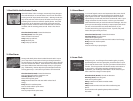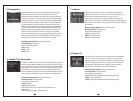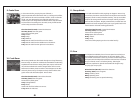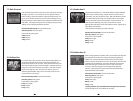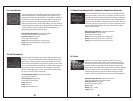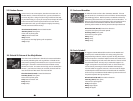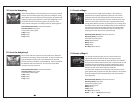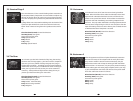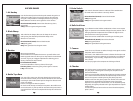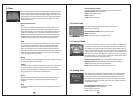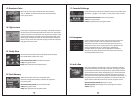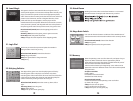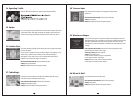
Using direction control button indicate if two given numbers have
the same (=), bigger (>) or smaller (<) value. Press A Key to select
Directional Pad (D-Pad): Control the direction
A Key: Play game/Select
B Key: Exit game/back to the game menu
17. Formula Challenge
18. Hexagonos
Two green platforms are floating in the air (one higher and one
lower) and moving from one side to another. The player is always
on the lower one and has to jump onto the upper platform when
the two platforms are almost overlapping in the vertical direction.
When certain amount of jumps is reached, the player enters the
next level. Each time a level is passed, the platforms move faster. If
the player does not land on any platform, he/she will fall into the
abyss and lose a life. When all 3 lives are lost, the game is over.
19. Jack's Pea
Directional Pad (D-Pad): Move left or right.
Start Key (Start): Pause the game, press it again to resume.
A Key: Jump up.
When the numbers are shown, remember their
location. Using direction button, indicate the sequence
in growing order.
Use the direction buttons select and repeat action showed
with wand before. Select with A Key.
Directional Pad (D-Pad): Control the direction
A Key: Play game/Select
B Key: Exit game/back to the game menu
15. Firefly Glow
16. Flash Memory
Directional Pad (D-Pad): Control the direction
A Key: Play game/ Select
B Key: Exit game/back to the game menu
Within given time, select with direction control button
“UP” or “DOWN” to indicate which color more dominates
in the given square.
13. Dominant Color
In this game, the player controls the knight and needs to capture
all the pawns. The movement follows the chess rules. The knight
moves 2 squares in one direction and 1 square in the other. Every
time the horse moves, the pawns move one step forward. If one
of the pawns manages to reach the end of the board, the player
loses. If all the pawns are captured, the player receives one point
and goes to the next level!
14. Fight or Lose
Pawn
The pawn moves differently depending on whether it moves to an
empty square or whether it takes a piece of the opponent. When a
pawn does not take, it moves one square straight forward. When this
pawn has not moved at all. i.e., the pawn is still at the second row
(from the owning players view), the pawn may make a double step
straight forward. For instance, a white pawn on d2 can be moved to
d4. When taking, the pawn goes one square diagonally forward.
Rook
The rook moves in a straight line, horizontally or vertically. The rook
may not jump over other pieces, That is: all squares between the
square where the rook starts its move and where the rook ends its
move must be empty. As for all pieces, when the square where the
rook ends his move contains a piece of the opponent, then this piece is
taken. The square where the rook ends his move may not contain a
piece of the player owning this rook.
Bishop
The bishop moves in a straight diagonal line. Like the rooks, the bishop
also may not jump over other pieces.
Knight
The knight makes a move that consists of first one step in a horizontal
or vertical direction, and then one step diagonally in an outward
direction. The knight jumps: it is allowed that the first square that the
knight passes over is occupied by an arbitrary piece.
Queen
The queen has the combined moves of the rook and the bishop, i.e.,
the queen may move in any straight line, horizontal, vertical, or
diagonal.
King
The king moves one square in any direction, horizontally, vertically, or
diagonally.
29 30
Use the directional pad to move the arrow and A to select the
piece you want to move. Use A to select and confirm the
movement. Use B or C to cancel the movement. There are 2
things you can do, one is to jump and one is to duplicate. The
stone is duplicated when it is moved to a neighboring
hexagon. Move your piece next the opponent to make his
piece become yours. Whoever has more stones when there is
no more possible moves wins.



